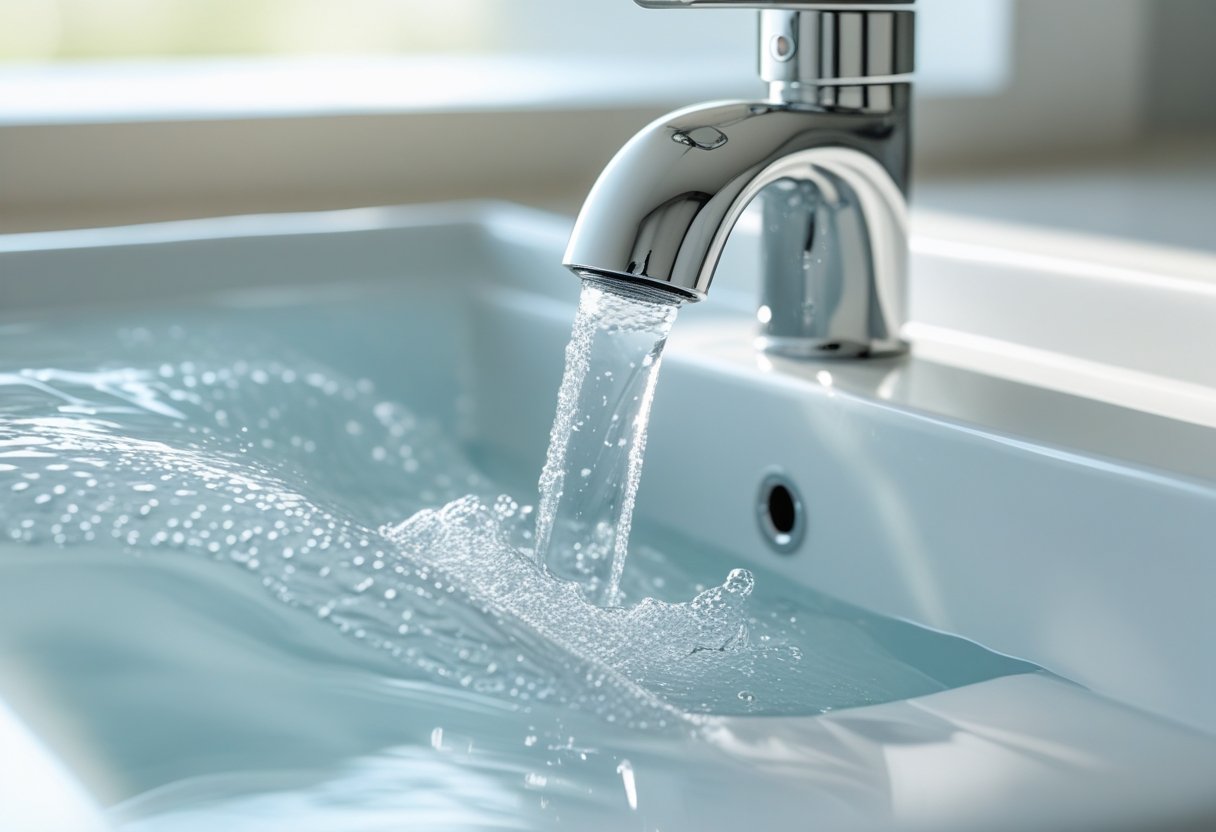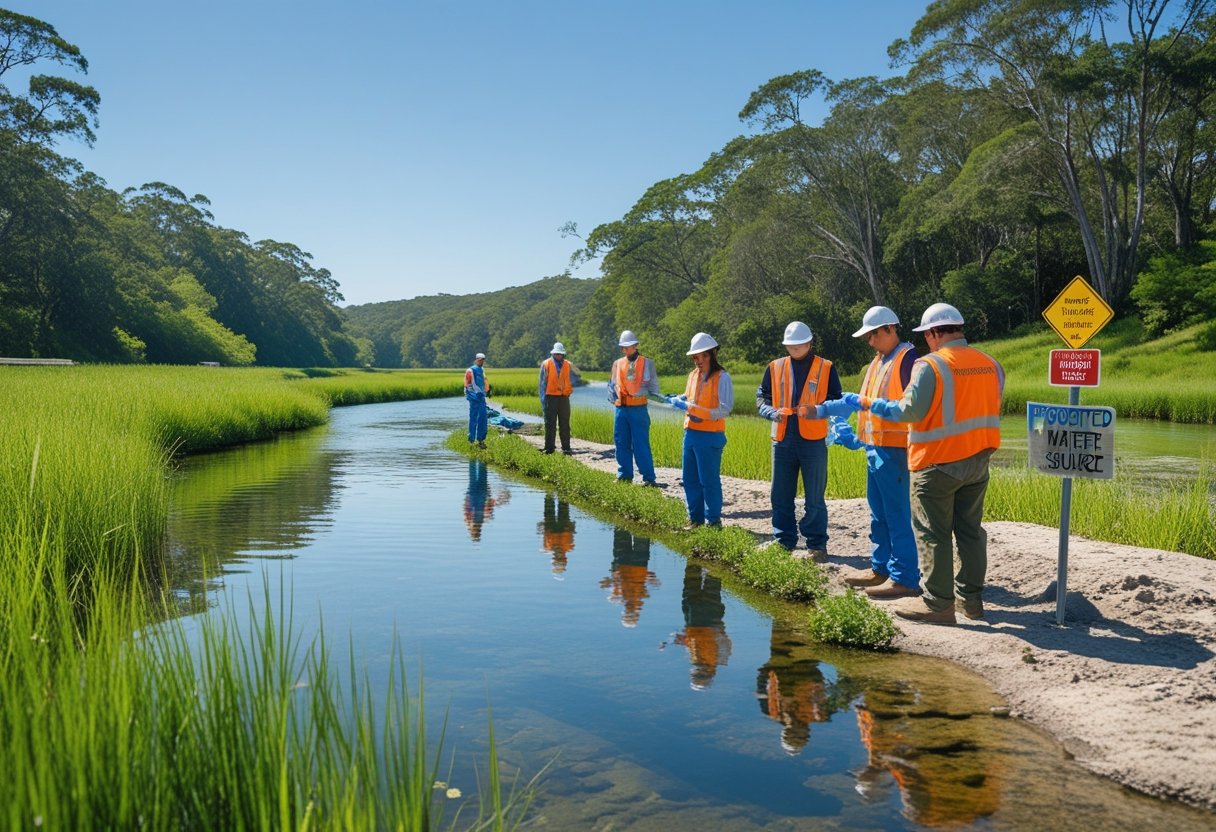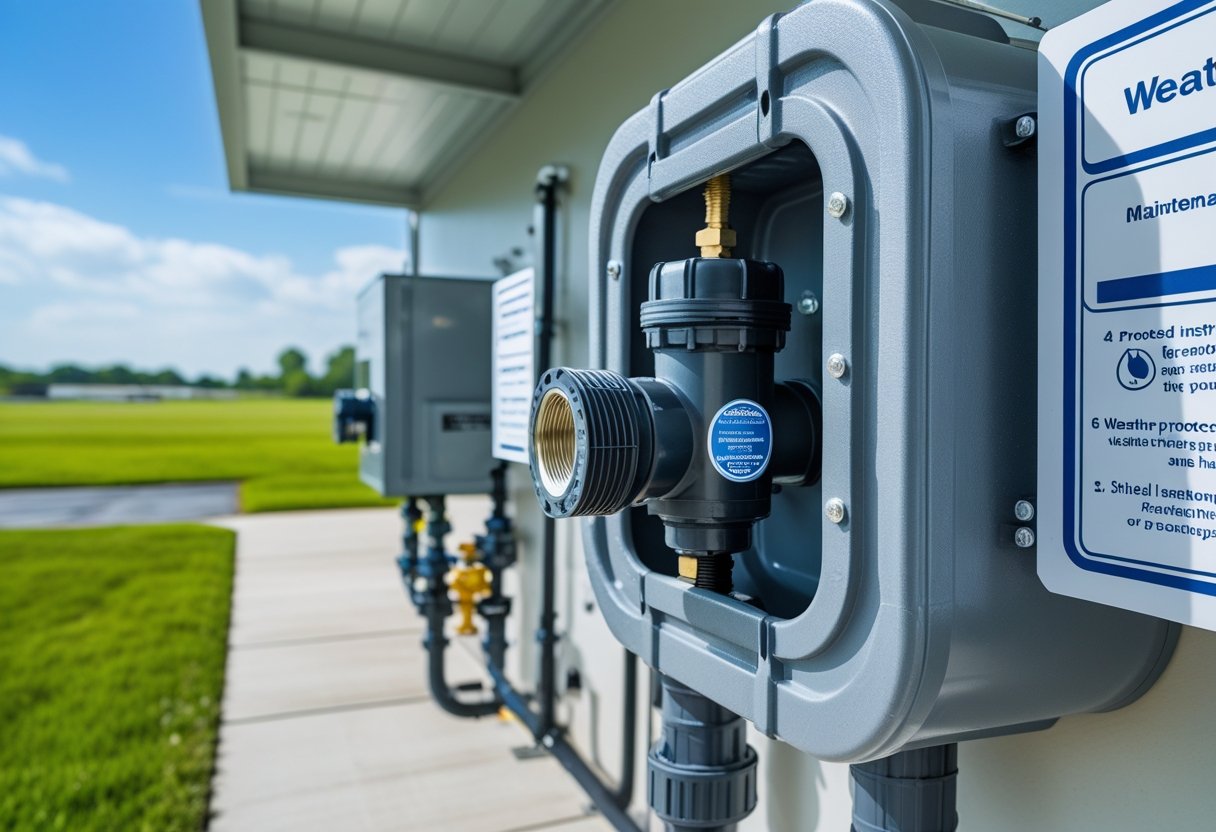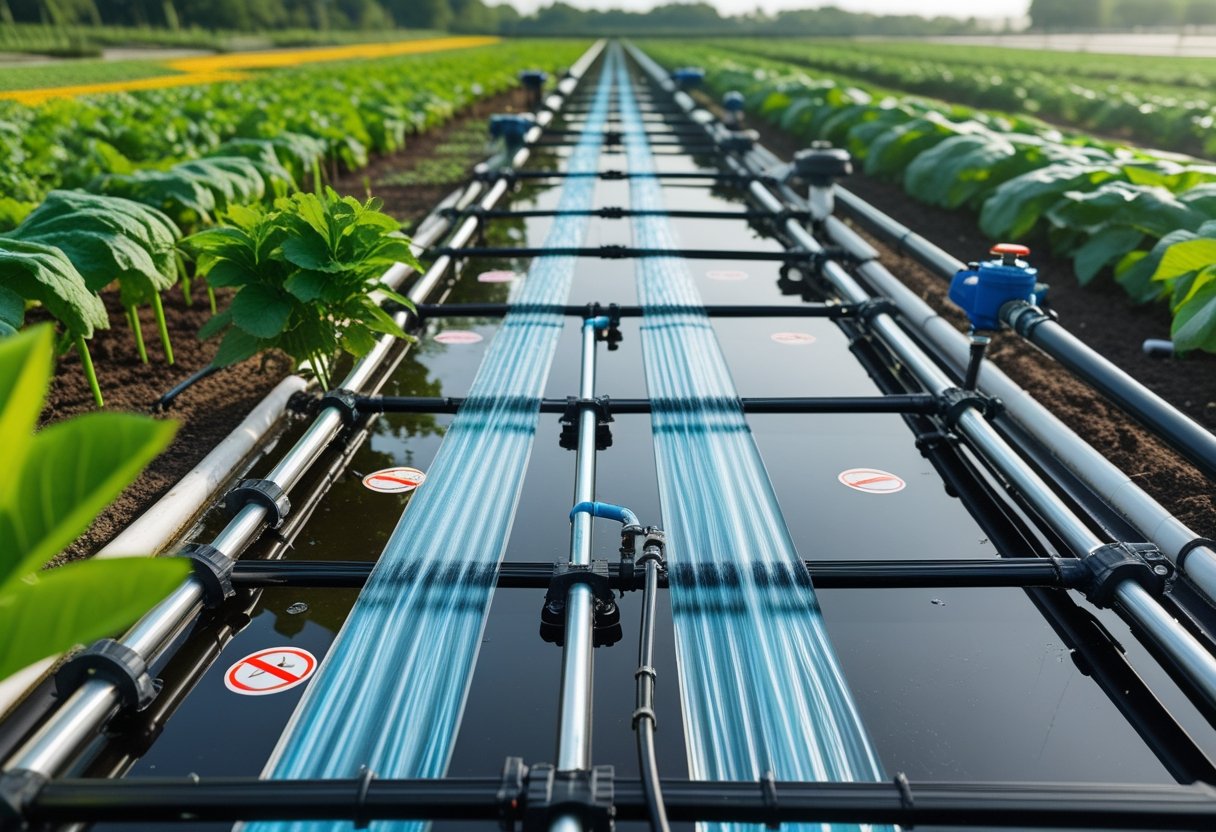If you own property in San Diego, you need to know about the water district compliance requirements. These rules help keep your water safe and protect the community.
One key requirement is that you must have your backflow prevention system tested every year to avoid fines or water shut-off.
Backflow systems stop dirty water from flowing back into the clean water supply. To stay compliant, you must test, maintain, and certify these devices regularly.
Many local services can handle the paperwork for you. This makes it easier to follow the rules without stress.
Overview of Water District Compliance in San Diego
Water district compliance in San Diego focuses on protecting water safety and making sure your property meets legal requirements. It involves rules about maintaining plumbing systems, especially those related to backflow prevention.
San Diego follows state and local laws for these requirements. You need to keep your plumbing systems safe and up to code.
Purpose of Compliance Requirements
The main goal of these rules is to keep San Diego’s water clean. You need to prevent backflow, which can cause dirty water to flow into the public system.
This helps stop contamination that can affect your home and the community. Compliance also helps you avoid fines if your property fails to meet standards.
It ensures your plumbing is tested, maintained, and certified. Following these rules protects your family’s health and the city’s water supply.
Governing Regulatory Agencies
You must follow rules set by several agencies. The San Diego County Water Authority oversees water quality and distribution.
Local water districts manage compliance checks and inspections. The California State Water Resources Control Board sets state-wide water safety standards.
They require testing of backflow prevention devices and keep records. These agencies work together to protect your water and enforce the rules.
Legal Framework and Standards
San Diego follows state laws and local ordinances on water safety. The California Plumbing Code requires regular testing of backflow devices.
Your property must have certified backflow preventers and keep current test reports. You must have tests done annually by certified testers.
These results go to your local water district. If you don’t comply, you could face penalties or water shutoff.
Key San Diego Water District Regulations
You need to follow several rules to keep your water system safe and avoid penalties. These include guidelines from local authorities, state and federal laws, and city ordinances.
San Diego County Water Authority Guidelines
The San Diego County Water Authority sets rules to protect your water supply. Backflow prevention is a major focus.
You must have devices like backflow preventers tested every year. This makes sure dirty water doesn't enter the clean system.
You also need to keep records of these tests. Certified testers handle the paperwork, so you avoid fines or service interruptions.
If you own irrigation or fire sprinkler systems, you should install and maintain backflow devices. The Water Authority informs you about testing schedules and requirements.
State and Federal Compliance Mandates
You must follow the Safe Drinking Water Act, a federal law that protects drinking water quality. This law requires regular testing and maintenance of water systems.
California state laws add another layer of rules. They require annual backflow testing and reporting.
The state enforces these rules by issuing fines if tests are missed. Both state and federal rules require you to use certified testers.
These testers verify your devices work correctly and submit test results to authorities.
Local Ordinances and Policies
San Diego city rules require strict backflow prevention. You must install approved backflow devices on your property’s water connections.
The city enforces these rules to protect your health and property. If you don't test or fix your devices on time, you could face fines or water shut-offs.
Local insurance policies often require proof of compliance. Having proper backflow prevention helps you avoid costly claims and keeps your insurance valid.
Permitting and Reporting Requirements
You need specific permits before starting work related to water systems in San Diego. Keeping your permits current and submitting regular reports helps you avoid fines and keeps your water supply safe.
Types of Permits Needed
For most water-related projects, you’ll need a Water Facilities Permit from the local water district. This permit covers work on pipes, meters, and backflow prevention devices.
If your project affects the public water system, you might also need a Construction Permit. If you install or modify backflow devices, you must follow district rules for those permits.
Always identify the type of permit required before starting work.
Application and Renewal Process
To apply, fill out a form from the San Diego water district with project details and plans. Submit your application with the required fees.
After review, the district approves or asks for changes. Some permits, like backflow device permits, must be renewed every year.
You’ll get reminders, but track these deadlines yourself. Renewal requires updated documents and payment of fees.
Regular Reporting Obligations
Once you have permits, the district requires you to submit reports, often yearly. Common reports include backflow device testing results, maintenance records, and any repair work.
Certified testers must prepare backflow reports. These reports prove your system works correctly.
Keep copies of your reports and submit them before district deadlines. This helps you avoid fines and keeps your property in good standing.
Water Quality Standards
Water quality rules in San Diego focus on keeping drinking water safe and clean. You need to know how these rules apply to testing, what happens if water doesn’t meet standards, and how often checks must happen.
Drinking Water Quality Compliance
Your water must meet chemical and biological limits set by state and federal agencies. These standards limit things like lead, bacteria, and chemicals.
Water systems in San Diego use treatment and monitoring to meet these rules. If water tests show problems, you must fix the issue quickly and warn users if necessary.
You should get reports about your water quality every year. These reports show if your water meets safety standards or if any problems were found.
Testing Protocols and Frequency
Regular testing keeps water safe over time. Most tests check for contaminants like bacteria, pesticides, and heavy metals.
You need to test your water at least once a year. Some high-risk systems require more frequent checks.
Certified labs must perform the tests. You or your water provider will file the test results with the city or water district.
Enforcement of Standards
If your water system fails to meet standards, the city or water district can order corrections. This can include fixing equipment or increasing treatment steps.
In cases of serious health risk, you might get an immediate notice to avoid drinking the water until it’s safe.
Regular inspections help catch problems early. You must keep records of all tests and repairs to prove compliance during audits.
Conservation and Environmental Initiatives
You play a part in protecting San Diego’s water supply by following rules that improve water use and stop pollution. These efforts keep water safe and available.
Water Use Efficiency Measures
You need to use water wisely to meet San Diego’s conservation goals. Fix leaks quickly and use water-saving devices like low-flow toilets and efficient irrigation systems.
The water district encourages you to replace old sprinklers with drip irrigation or smart controllers. These tools cut down waste and save money on your water bill.
Sometimes, the district requires audits to check your water use. You might also have limits on lawn size or rules for watering times.
Pollution Prevention Programs
San Diego requires backflow prevention devices to stop harmful chemicals or bacteria from entering the water system. If you have irrigation or commercial water use, install these devices.
Avoid dumping chemicals, oils, or waste near storm drains and waterways. The water district runs programs to educate you about keeping pollutants out of stormwater.
By following these pollution prevention efforts, you help protect the ocean, lakes, and your community’s health.
Safety and Emergency Planning
Keeping your water system safe means having clear plans for emergencies and knowing how to react fast. You need steps to handle problems and a way to share important information when something happens.
Contingency and Response Planning
You should have a written plan for possible water system problems like contamination or equipment failure. This plan includes how to stop contaminants and how to fix things quickly.
Your plan must list key actions, who is in charge, and what tools or parts you need. Regular drills help you and your team stay ready.
Check and maintain your backflow prevention devices. This reduces risk and helps meet San Diego’s rules.
Emergency Notification Procedures
If a problem happens, you must alert the right people fast—this includes your water district, emergency services, and customers if needed.
Have contact lists ready and update them often. Use phones, emails, or automated alerts.
Clear messages explaining the issue and what to do keep everyone safe. Quick notifications help prevent health risks and legal trouble.
Inspections, Audits, and Penalties
You need to keep your water systems safe and follow San Diego’s rules to avoid problems. Inspections check your backflow devices regularly, audits look over your records, and you can face penalties if you don’t meet the standards.
Routine Inspection Processes
You must test your backflow prevention devices every year or every six months, depending on your property type. Certified testers will check the device’s function to make sure no dirty water can flow backward.
Keep a clear schedule for these inspections. Have proper documentation ready for inspectors.
They will verify that you’ve done your tests on time and that your backflow system meets code. If your property is commercial or industrial, these inspections are especially important.
San Diego water authorities take these steps seriously to protect the public water supply.
Handling Non-Compliance Incidents
If you miss an inspection or your backflow device fails, act quickly. Repair or replace the device and get a retest done as soon as possible.
Notify your water district if you have non-compliance. They might give you a deadline to fix the issue.
Staying in contact shows you are working to correct mistakes and can sometimes help reduce penalties. Keep all repair and retest records.
These prove you took the right steps to fix the problem.
Penalty Structures
Penalties for not following backflow rules can include fines and water service restrictions. Fines often start with warnings but can grow if problems continue.
Typical penalties include:
- First offense: Warning and a small fine
- Second offense: Larger fine and mandatory repairs
- Continued offenses: Higher fines, possible water shut-off
Regular maintenance and quick responses to any issues protect your water and save you money.
Training and Community Engagement
To meet San Diego’s water district rules, you need to know what training staff require and how the public learns about water safety.
These efforts keep water clean and protect your property from contamination.
Staff Compliance Training
Your staff must receive proper training on backflow prevention and water safety rules.
This training teaches them how to test and maintain backflow devices to stop polluted water from entering the public supply.
The water district often requires certified training programs.
These programs might include hands-on testing and updates on rule changes.
Well-trained staff help you follow legal requirements and reduce risks.
Keep records of all training to show compliance during inspections.
Regular refreshers help staff stay current with new procedures or technology.
Public Education Initiatives
Public education helps your community understand why water safety matters.
Local agencies in San Diego run programs that teach simple steps to protect drinking water from contamination.
These initiatives may use workshops, flyers, websites, and school visits.
By participating, you can learn about checking your home’s backflow devices and reporting problems early.
Community engagement encourages everyone to take responsibility for clean water.
When you know the risks and solutions, it becomes easier to follow rules and keep water safe.
Emerging Trends and Future Compliance
In San Diego, water district compliance is changing to keep up with new technology and environmental needs.
You may see more rules focused on preventing pollution and protecting water safety.
One big trend is the use of smart devices in backflow prevention systems.
These devices can alert you in real time if there is a leak or issue.
This helps you fix problems faster and stay compliant.
Another important change is stricter testing and maintenance schedules.
The water district wants to make sure your system works correctly at all times.
Regular checks help you avoid fines and keep your water safe.
Here’s what to watch for:
- More frequent backflow tests
- Digital records for easier tracking
- Stronger rules on repairs and replacements
You can also expect more education and support from local water services to help you understand these changes.
Frequently Asked Questions
You need to follow specific rules when installing water meters, designing water systems, and managing water use in San Diego.
Contact the right department if you have billing issues or get a shut-off notice.
Following wastewater rules protects the environment and helps you avoid fines.
What are the requirements for installing a construction water meter in San Diego?
You must apply for a construction water meter permit through the city.
A certified plumber must install the meter according to city standards.
Make sure the meter size fits your construction needs.
Take monthly meter readings to ensure accurate billing.
Can you guide me through the process of designing a compliant water system in San Diego?
Start by reviewing city codes and hiring a licensed engineer or plumber.
Your system must include backflow prevention devices to protect your drinking water.
Plan for proper water pressure and drainage to meet all local codes.
This helps you avoid future problems.
What should I do if I receive a water shut-off notice in San Diego?
Contact the San Diego Water Department immediately.
The notice will explain the reason, such as unpaid bills or meter issues.
You may need to pay your bill or schedule a repair to restore service.
How often is it recommended to water my lawn according to San Diego regulations?
San Diego encourages watering no more than two days per week.
Avoid watering during the hottest part of the day to reduce evaporation.
This helps conserve water and follows local water use rules.
Who should I contact if my water bill has not been received?
Reach out to the San Diego Water Department’s customer service.
They can verify your account information and reissue your bill if needed.
Keep your account number handy for faster service.
What steps must be taken to comply with San Diego's wastewater regulations?
Connect to the city’s sewer system if it is available.
Do not dump hazardous materials down drains.
Inspect and maintain your wastewater system regularly to follow city rules and avoid fines.











